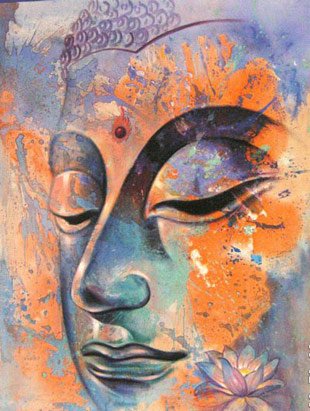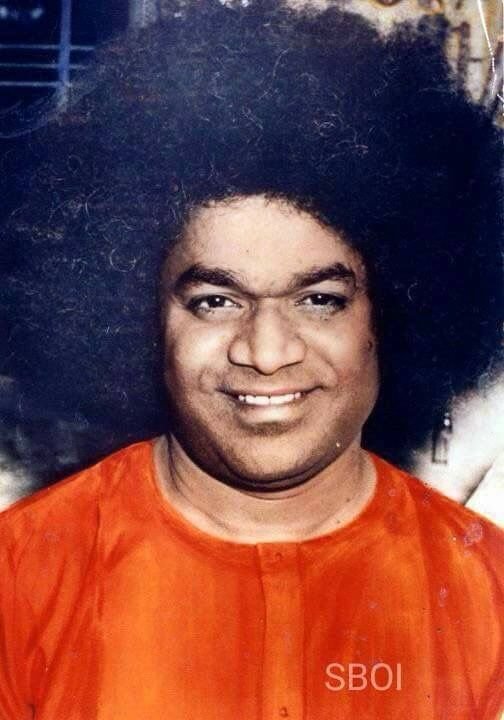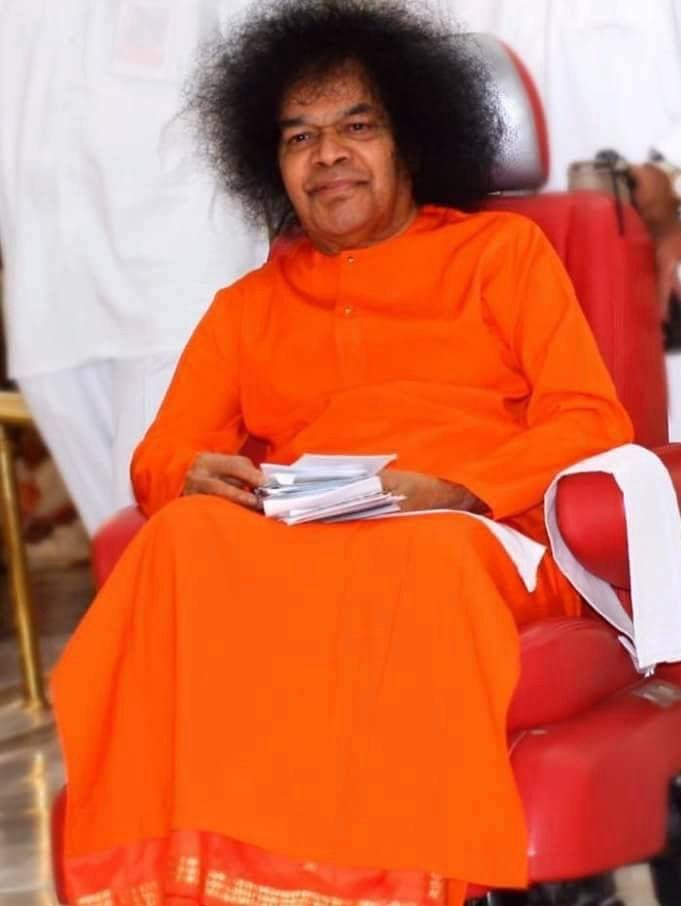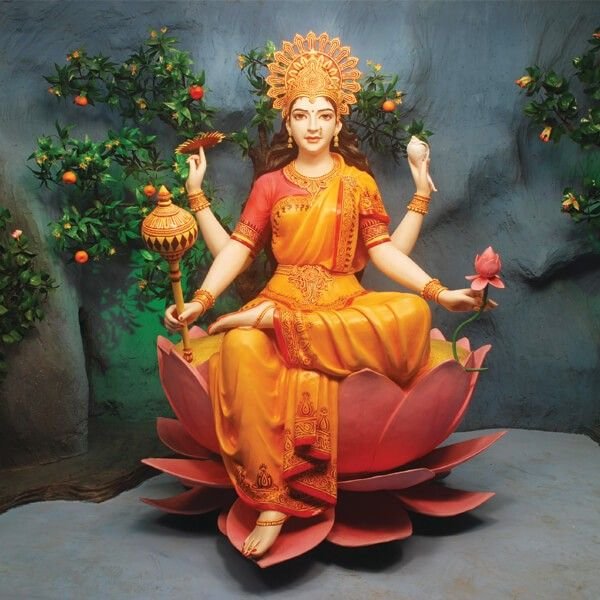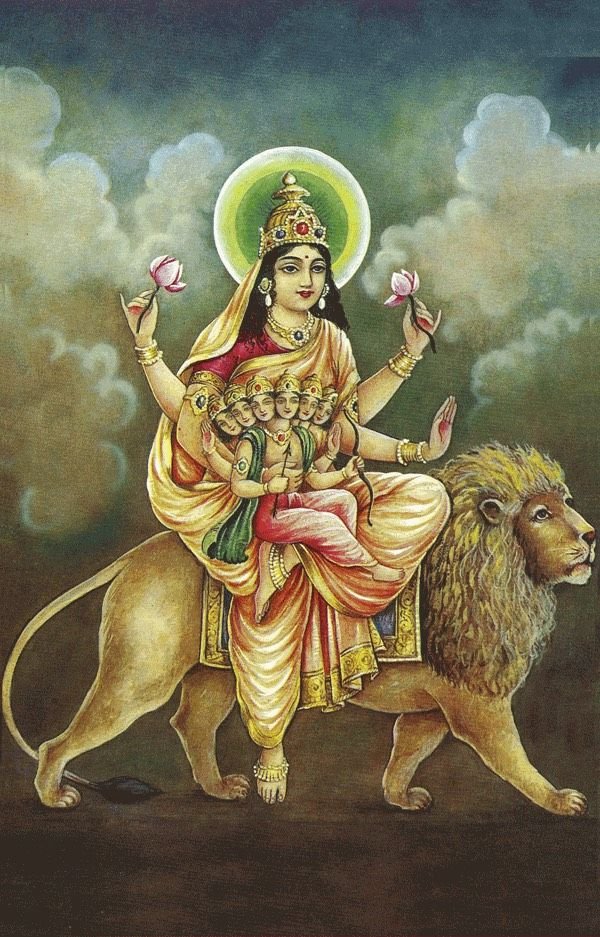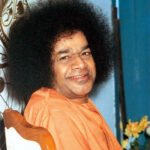CONVERSATIONS WITH SAI Satyopanishad
Satyopanishad – Part Twenty-Three
Direct Directions from the Divine
CHAPTER VII:
Sadhana, The Inner Door
Prof. Anil Kumar: Swami! How can we realise the divinity within us?
Bhagavan: Look! In college, you have elective subjects like M.P.C (Mathematics. Physics and Chemistry), B.P.C (Biology, Physics and Chemistry) and so on, haven’t you? Similarly, to realise the divinity within you, you have to take a group of three subjects. They are bhakti (devotion), gyana, (wisdom) and vairagya (renunciation).
Without devotion, you can’t acquire wisdom – Bhakti leads to gyanam. Without wisdom you can never develop detachment or renunciation. Wisdom takes you to renunciation. A flower, after a while, turns into an unripe bitter fruit, which ultimately becomes a sweet ripened one, doesn’t it? It is a question of time that brings about the change. Devotion transforms itself into the wisdom that leads to detachment. This detachment helps you in visualising the divinity within yourself. The fruit then drops down from the tree of life. Gyana (wisdom) contributes to sharanagati, surrender.
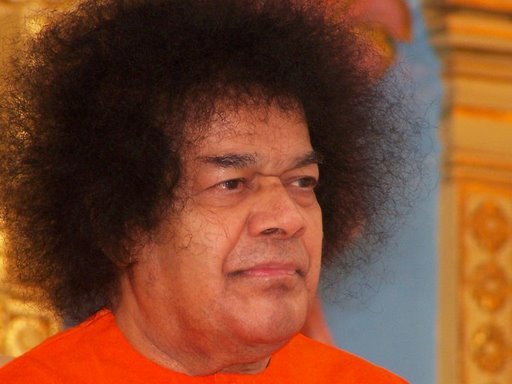
You should remember one point here. Gyana, Japa, Yagna (Wisdom, chanting and performing sacrifices) are not important as such. Your love for God is more important than any other such rituals for success in spiritual pursuit.
Intense love for God is bhakti, devotion. Knowledge, broadly speaking, is of two types: one is physical, which is secular, material and worldly knowledge, while the other is spiritual, which is metaphysical, transcendental and divine knowledge. Spiritual knowledge is non-dual, and helps the seeker to realise and experience his/her own divinity.
Prof. Anil Kumar: Swami! How are we to attain bliss?
Bhagavan: It is a pity to find many a confused and disturbed person even in the spiritual field. Though a person is in an ashram or a spiritual centre, he/she undergoes shrama, suffering. It is a matter of shame if a person calls himself or herself a devotee without following a single teaching or practicing it for his transformation. The life of a devotee should be pure, calm, peaceful, and detached, and he should pine for the knowledge and experience of the Self, or the spirit, or the atma. Infinite desires, meaningless worries and anxieties to get all that one doesn’t really deserve are obstacles in spiritual life. That is why many don’t enjoy divine bliss. Body attachment makes things much worse.
| You should cultivate four main qualities which are the prerequisites of a devotee of God. The first one is maitri, friendship, second, karuna, compassion, the third mudita, feeling happy at others’ progress, and the fourth quality is upeksa, detachment. |
Four qualities are very essential for the attainment of divine bliss: samam-damam that is, control of the outer and inner senses, trupti, which is contentment, vicharana or enquiry, and satsang or good company. They confer divine bliss on the seeker. You have got to know how this most valuable divine bliss is contained within the human body, which is itself transient, and is of lesser value than the spirit.
The body is composed of two bucketfuls of water, one bucketful of lime, a quantity of iron that equals four two-inch nails, the amount lead used in six pencils, phosphorous contained in nine hundred and twenty matchsticks, and the fat held in four Lux soaps. Herein lies the atma, the divine spirit. Divine bliss can be attained by investigating, realising and experiencing the inner core of this body, viz. atma.
Prof. Anil Kumar:Swami! Many spiritual practices are suggested, such as, namasmarana, that is, singing the glory of God, dhyana or meditation, puja or worship, etc. But, none of these confer total satisfaction. We are not able to practise and follow continuously even one of them. Dissatisfaction over not being able to succeed and frustration about not receiving the rewards for the little we do is overpowering us. Why does this happen? Kindly show us the way.
Bhagavan: You have to plough the land, remove the weeds, manure and water it. Isn’t it so? Without tilling the land, removing the weeds and watering, even if you sow the best of seeds, will it be of any help? Similarly, if you want to achieve the four purusharthas, the four objectives of life (which are right conduct, prosperity, desire, liberation) you should follow any one of the nine paths of devotion, and adopt the eightfold path of yogic practices, that is, the astanga yoga. Follow the spiritual path scrupulously.
You will not be able to see clearly the reflection of the Sun or of the moon alike in containers filled with different kinds of water. One container may have very dirty water where you can’t see the reflection of the Sun or the moon clearly. This is how the tamasika quality acts, cutting you off from reality. In another container, water may be found shaking and not still. Then also the reflection of the Sun will be unclear.
Then, the question is how to achieve the pious quality or sattvika nature and the purity of heart or chittashuddhi to recognise and experience awareness of atma? He who can find out his own faults and others’ merits can keep his heart steady and pure. If you can identify your own mistakes and rectify them, it doesn’t matter wherever you are.
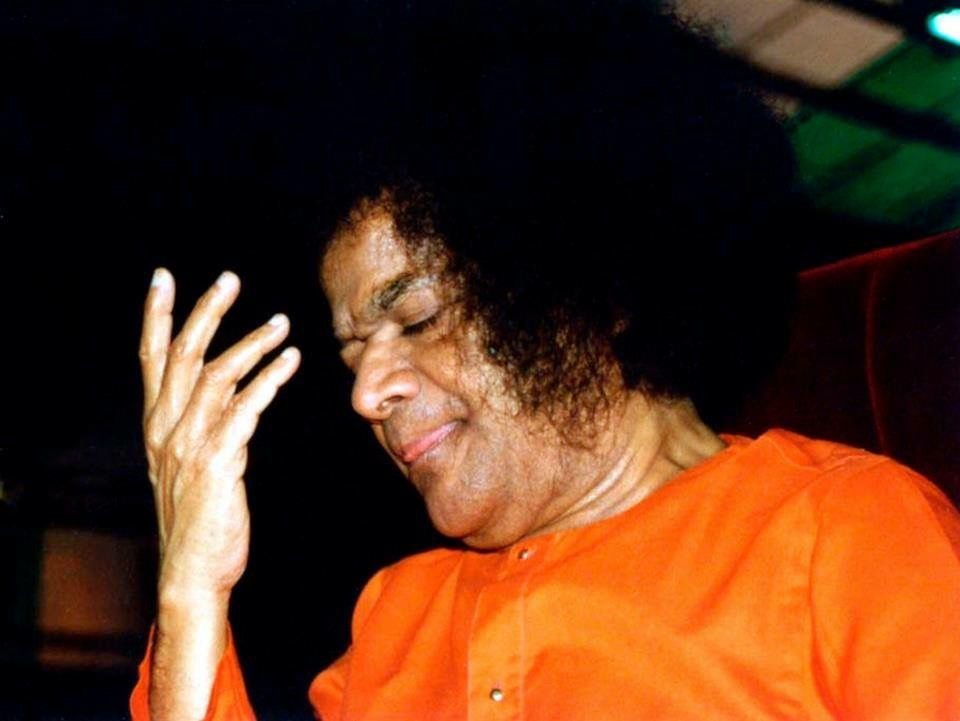
Take a simple example. Your room may be full of mosquitoes. But if you have a mosquito net you will not be affected by their presence and you can sleep well. On the other hand, if there are mosquitoes inside the net, how can you sleep? Whose mistake is it? Similarly, see that there are no mistakes in you. Always remember that sadhana is intended for devotion and steadfastness. Sadhana done for selfish gains will be of no use and it can never give you bliss, peace and satisfaction. You can’t do sadhana in such a case intensely and fervently.
| Two things are with God only and are not present elsewhere. What are they? They are Bliss and Peace. True devotion is what urges you to pray to God for these two divine assets. |
Bhagavan:Listening to your accounts of sadhana, it appears you do not know what sadhana is. The practices you call ‘spiritual’ are undertaken by the mind. They give you only temporary happiness and satisfaction. On the other hand, they cannot be dismissed as altogether useless. Sadhanas must help you in spending your time in a pious way. What, then, is sadhana? “Sa” means salokyam, dwelling in heaven with the vision of God; therefore sadhana gives us the dhana, treasure, of salokyam. Every act of the mind is dualistic, artificial, and transient.
The Ramayana explains this very clearly. After his return from his uncle Kekaya’s kingdom and on coming to know of the death of his father, King Dasaratha, Bharata approached his mother Kaikeyi and asked her about the reason for his death. Kaikeyi said, “My dear son, I am responsible for the king’s death. For your benefit and to make you the king of Ayodhya, I asked your father to grant me the two boons he had promised to give me a long time ago. As the first boon, I asked that you be crowned, and as the second, Rama be sent to the forest. Your father couldn’t bear the separation from Rama and so he died”.
On listening to this, Bharata became very furious. He said, “Oh! Wicked woman! Do you know what you did? Are you foolish? Do you think that you can cut off a tree and plant its branches to grow? Don’t you know that Rama is a tree?” In her view Kaikeyi was right in doing that but to Bharata it was very cruel. Today, what you are doing is exactly like that. You are cutting off the tree of divinity and planting the branches of prakruti, nature. This is not proper. So, any sadhana is useless if there is no devotion supported by steadfastness. Without these basic qualities of maitri, karuna, mudita and upeksa you can’t achieve anything. You can’t have peace, bliss and self-satisfaction. Therefore, for a spiritual life you should acquire these four qualities.
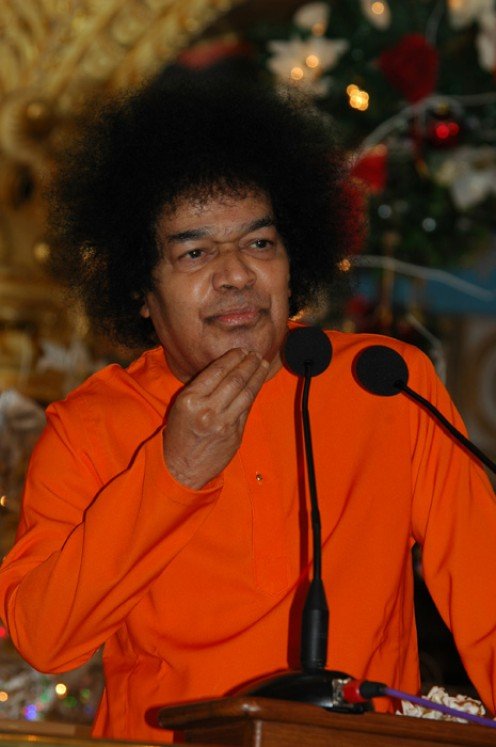
Prof. Anil Kumar: Swami! Many spiritual paths are mentioned by diverse traditions and religions. How far can these paths lead to experiencing divinity? To what extent are their spiritual exercises to be adopted? From the description of some of these, success in one lifetime appears impossible. On the other hand, the worry that no spiritual practice is undertaken plagues us. Is there no way out for us? Kindly grant us peace.
Bhagavan:Listening to your accounts of sadhana, it appears you do not know what sadhana is. The practices you call ‘spiritual’ are undertaken by the mind. They give you only temporary happiness and satisfaction. On the other hand, they cannot be dismissed as altogether useless. Sadhanas must help you in spending your time in a pious way. What, then, is sadhana? “Sa” means salokyam, dwelling in heaven with the vision of God; therefore sadhana gives us the dhana, treasure, of salokyam. Every act of the mind is dualistic, artificial, and transient.
Satyopanishad – Part twenty-four
CHAPTER VII:
Sadhana, The Inner Door
Prof. Anil Kumar: Swami! Renunciation, we feel, is the most difficult thing. We have so many attachments and it is not easy to give them up. Kindly suggest an alternative!
Bhagavan: No, it is very easy. You are wrong if you say that detachment is difficult. In fact, it is simpler and easier to be detached than to be attached. Now, look here! I hold this handkerchief in my hand. I hold it tight in my grip. It is a strain holding it like that for a long time, i.e. holding the handkerchief in the grip. On the contrary, it is very easy to simply drop it. Is it not? So attachment is difficult while detachment is easy.
Bhagavan: In My opinion, spirituality is very simple and easy. You may find crushing the petals of a rose flower difficult; compared with it spirituality is easier. But unfortunately, today there is none who knows and teaches sadhana.
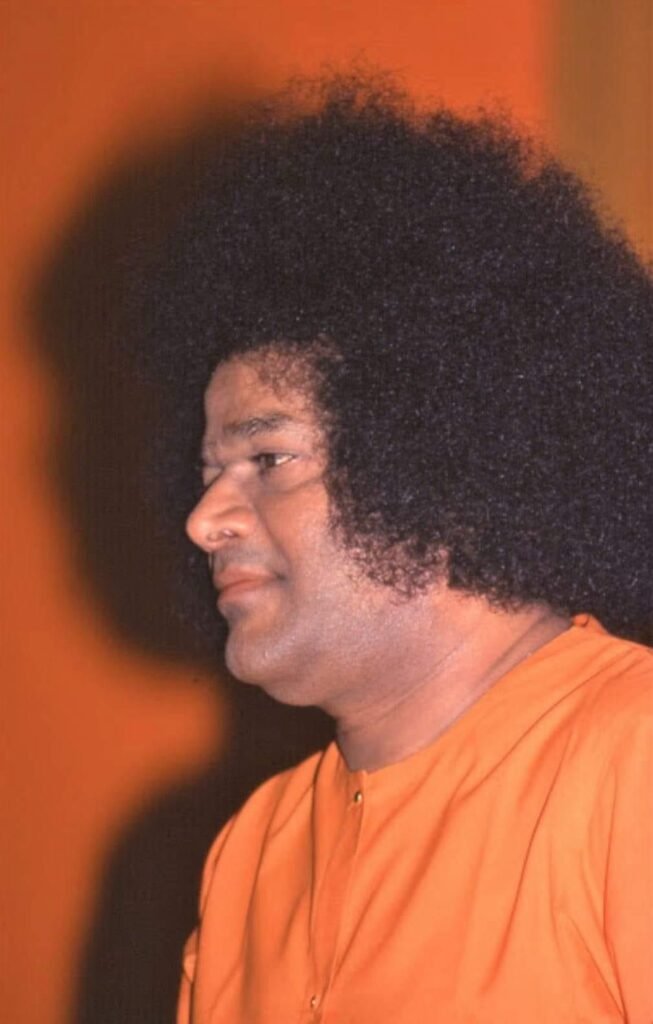
What is sadhana? It is a process of removing anatma (non-self from atma, Self). Then, you will have atmanubhavam, the experience of the Self. In other words, the Self, Spirit, Conscience, or atma is the reality. All the rest is non-self or anatma. This is the purpose of spiritual pursuit or sadhana.
You also wanted to know why a chosen spiritual path is discontinued. Understand well that nothing is wrong with sadhana. The mistake is yours. It is your weakness. For example, you boarded the Bangalore bound tram. If you get down in the middle without reaching the destination, whose fault is it? It is definitely not the mistake of the train. It is your fault.
Bhagavan: When the procedure is not correctly known and you are not able to concentrate as you meditate, do not waste time. Do some good work. It is ridiculous sitting down for meditation, while thinking of all sense objects and sensual pleasures. It is purely a waste of time. In fact, if it is true meditation, the feeling, “I am meditating”, should totally vanish. The three – ‘the one that meditates’, ‘the one on whom you meditate upon’ and the ‘process of meditation’ should be unified. This is called triputi.
| “Laziness is rust and dust; Realisation is rest and best” |
Always keep in mind one important thing. You are as much far from Me as I am from you. You should always experience proximity with God and finally identify yourself with Him. The fruit of your meditation depends on this. With conviction that God is everywhere and by loving and serving all, giving up selfishness and self-interest, you will experience the benefit of true meditation and know that your reality is atma, the Self.
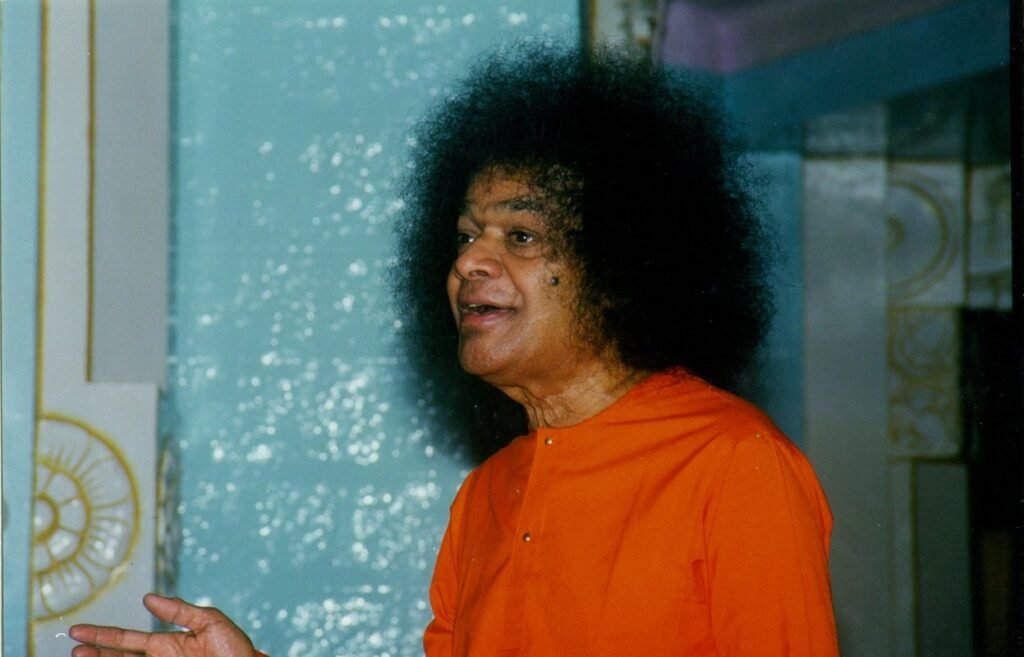
One example you might remember about meditation. Here are two tumblers, of which one is full of milk that has to be poured out into the other tumbler. What do you do? You hold the tumbler filled with milk in one hand and the empty tumbler in the other, and slowly pour milk. The two tumblers should be held tight.
If the tumbler with milk is shaking for any reason, the milk spills out. If the other tumbler is not held tight, and starts shaking, you can never collect milk. In other words, both the tumblers must be kept steady. The upper tumbler with milk is God, who should be pleased with your unflinching devotion while the lower tumbler, which represents the devotee should have unwavering faith.
Prof. Anil Kumar: Swami! My mind is not steady. How am I to do bhajans? Without steadiness of the mind, what for are our bhajans?
Bhagavan: The mind is never steady. This is natural. The body may find it easy to be steady and difficult to move and run, the condition of the mind however is just the opposite. The mind finds it difficult to be steady, but easy to run or waver. Body is jada, inert, but the mind is chaitanya, awareness.
You may lie down on your bed, but your mind will go round all places. Here there is one important point that is to be noted.
The mind has no independent existence. It functions only through the body. The mind which goes round different places is not received and responded to by anyone. No one extends hospitality or responds to its behaviour.
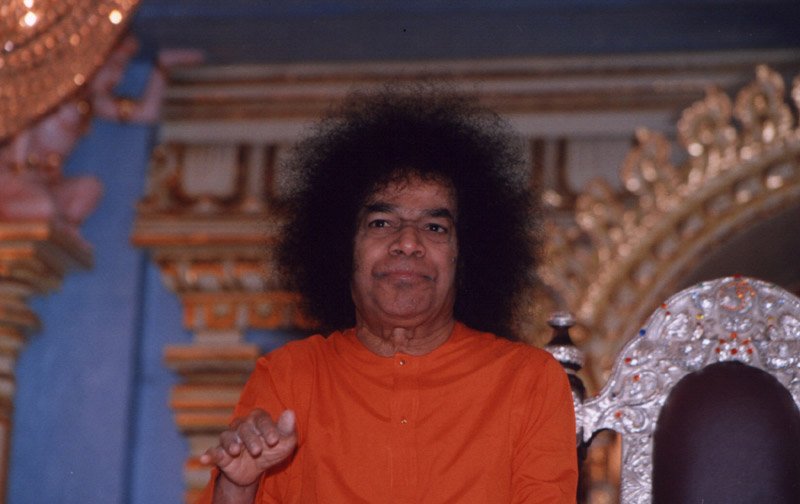
Prof. Anil Kumar: Swami! Some people are not putting in enough effort in matters of spirituality. They are lazy. Is it proper to be so?
Bhagavan: This is not spirituality at all. “Laziness is rust and dust; Realisation is rest and best”. Man is gifted by God with body, mind and intellect for performing karma, action. It is said, Karmanubandhini manusyaloke – Human society is bound by action. Karmame karanam narunaku sukhadukhamilalo (Telugu verse) – It is only action that makes you happy or unhappy. Karma is the cause of janma (birth). For the redemption of life and following righteousness, one has to take to the path of action that gives you the divine experience, brahman.
You may say that you are not doing any karma. Remember that you can’t live for a moment without karma. Respiration, blood circulation, etc., are actions, whether you know it or not. You eat food while it is God who digests it. One significant thing is human effort and God’s grace are both equally important. These are like the positive and negative wires through which the current flows. Another example is the matchbox. In order to light a matchstick, you have to strike it against the sides of the box.
One has to correct one’s lapses and mistakes. You should never speak ill of anybody. There is another episode connected with Buddha. Buddha mercifully accepted the invitation of a prostitute to dine at her residence.
While He was proceeding, the village head came and objected to His visit to her residence, as she was a bad character. Buddha caught hold of his right hand and said, “Now, clap your hands if you can”. The village head said “Oh, Lord! How can I clap with one hand while you hold my right hand?”
Buddha smiled and said, “You can’t clap with one hand. You have to join both the hands. Similarly, you have said that the woman is of loose character. Who has made her like that? It is you people who have spoiled her”. Then the village head and other elders fell at His feet and followed Buddha. The woman too changed her behaviour and became His devotee.
During that time another significant event happened. One day Buddha was tired and taking rest. So He asked one of His disciples to address the gathering that evening on a spiritual topic. The disciple got up, and while speaking in praise of his master, Buddha, he said, “No master like Buddha was ever born before him nor would be born later”. Everyone clapped.
